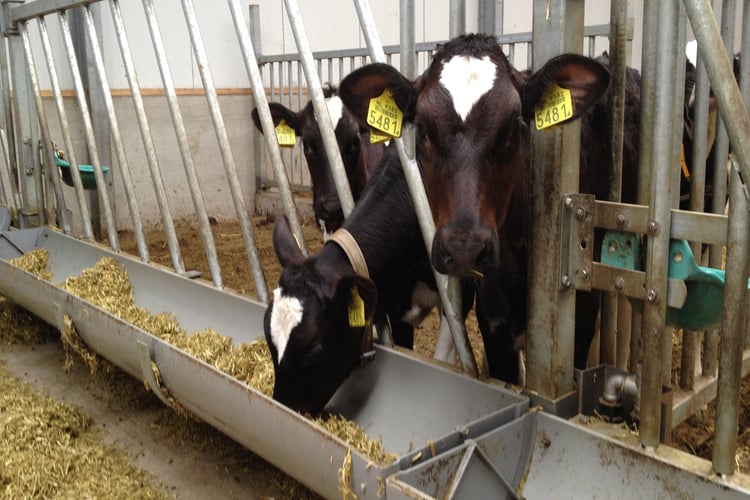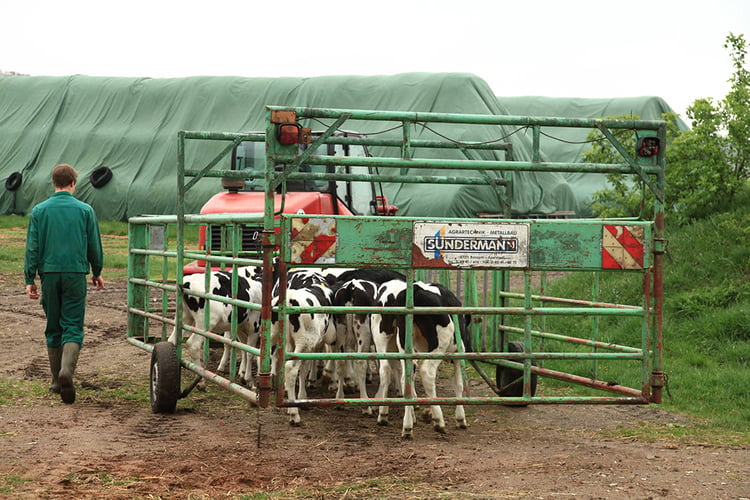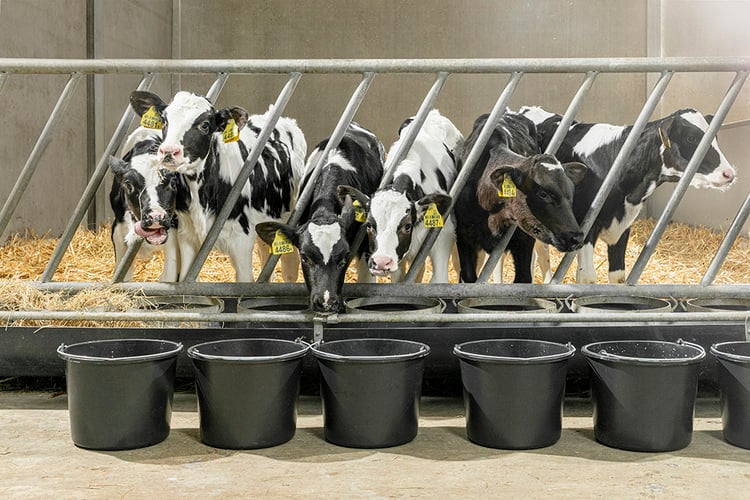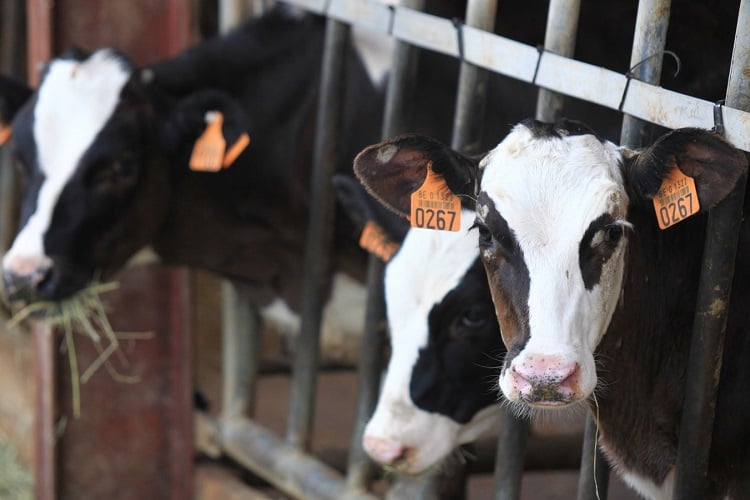Feeding patterns after weaning can impact future behaviour
- LifeStart
- Calf to heifer
Key takeaways from the research:
-
Early feeding practices in weaned calves can create patterns of behaviour.
-
These patterns of behaviour can persist beyond the period of time in which they are established.
-
Increasing the level of straw in a TMR can negatively impact future calf feeding behaviour, even if only fed for a short period of time

Feeding patterns in the post-weaning period can have a negative impact on future feeding behaviour and performance
With so many farmers now opting for an elevated plane of nutrition, the growth and performance gain that farmers enjoy prior to weaning should continue in the months after weaning. It has been shown that with dairy cattle, certain post-weaning feeding practices can create behavioural patterns that persist into later life[1]. In a study[2] by the University of Guelph, Wageningen University, and Trouw Nutrition R&D, the effects of post weaning calf nutrition and the effects of a dry total mixed ratio on growth, performance gains and behavioural patterns were measured.
Study design
Two groups of 5 three-month-old bull calves each were included in the study. The study started 40 days after weaning and lasted 12 weeks. One group received a TMR containing 85% concentrate and 15% chopped wheat straw for 10 weeks, while the second group received the same 85% / 15% mix for the first 5 weeks, but was then switched to a TMR containing 70% concentrate and 30% chopped wheat straw for weeks 6 through 10 of the study. Both groups were then switched to a silage-based TMR for weeks 11 and 12 (42.3% corn silage and 57.7% haylage).
Results
Once the calves in the second group were switched to the 70% concentrate/ 30% chopped wheat straw diet, declines in both dry matter intake (DMI) and average daily gain were noted. In weeks 6 through 10 of the study, DMI for the 70% group was 5.53 kg per day vs. 7.38 kg per day for the 85% group. The lower DMI in the 70% group was related to physical rumen fill rather than with the increase in neutral detergent fibre that comes with a diet higher in straw. The lower DMI in the 70% group resulted in lower ADG as well (1.25 kg per day vs. 1.59 kg per day for the group maintaining the 85% / 15% TMR diet). This resulted in a difference of almost 12 kg in body weight by the time the study reached its 10th week.
However, once the calves were fed the same silage-based diet in weeks 11 and 12 of the study, differences in intake were no longer observed between the 2 groups, suggesting, that the earlier feeding programme had no effect on the ability of calves to change to a silage-based diet[2].
While there were no differences in intake between the two groups in the last two weeks of the study, there were differences in negative behaviours that seemed to carry over from the 5 weeks during which they were fed a different diet. Calves that had been in the 70% group continued to spend more time feeding, especially in the hours just after feed delivery, as well as more time feeding at night, just as they had done when they were on the higher straw diet.
Conclusion
The type of feeding pattern seen in this study, in particular engaging in a long meal following feed delivery could be undesirable if carried into adulthood, where it can have negative effects on rumen fermentation patterns. Therefore, any nutritional strategy, such as diluting dry TMR concentrate with more straw, as was done in this study, which promotes longer meals particularly after feed delivery, should be avoided. These kinds of feeding patterns can persist thereby embedding behaviours that could have negative consequences for production in later life.
Calf nutrition post-weaning impacts more than just immediate growth. It also has long-term consequences for behaviour and, ultimately, production. If poor feeding patterns settle in the period post-weaning period, the negative effects have an impact beyond the transition to silage-based feeds and the hard-fought gains made pre-weaning could be lost.
References
[1] DeVries, T.J., 2010. Review: Behavior and its role in the nutritional management of the growing dairy heifer. Can. J. Anim. Sci. 90: 295-302.
[2] Groen, M.J., Steele, M.A., and De Vries, T.J., 2015. Short communication: Effect of straw inclusion rate in a dry total mixed ration on the behaviour of weaned dairy calves. J. Dairy Sci. 98: 2693-2700.


